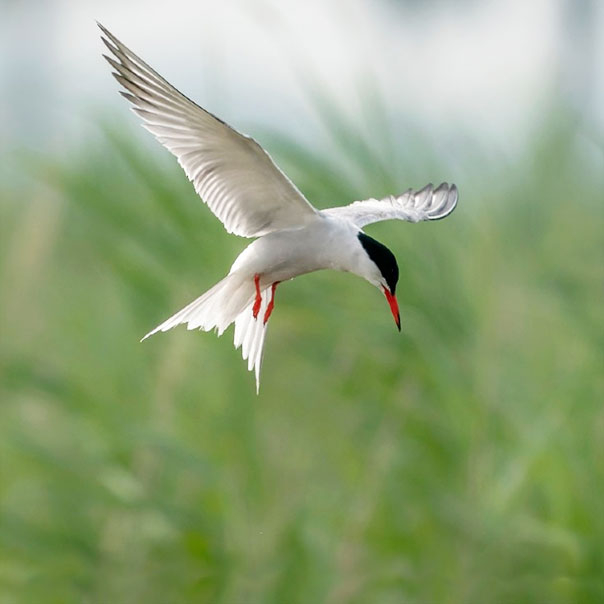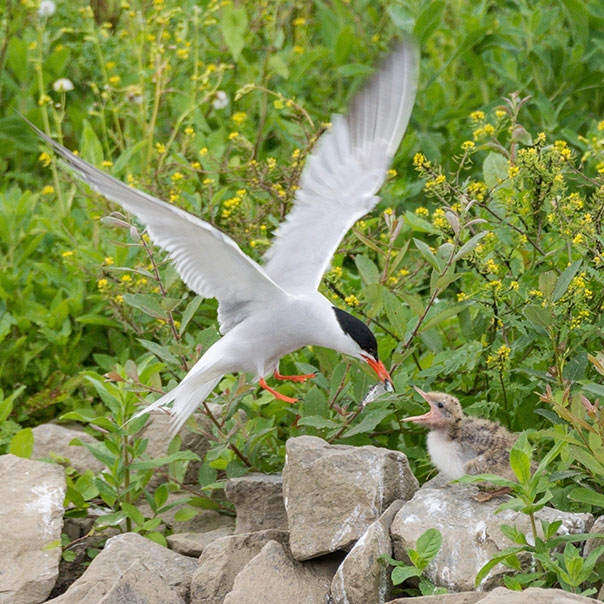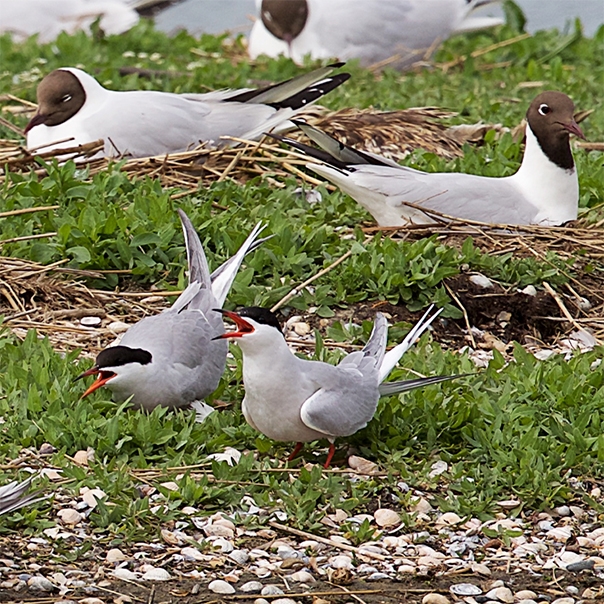Common tern
Scientific name: Sterna hirundo
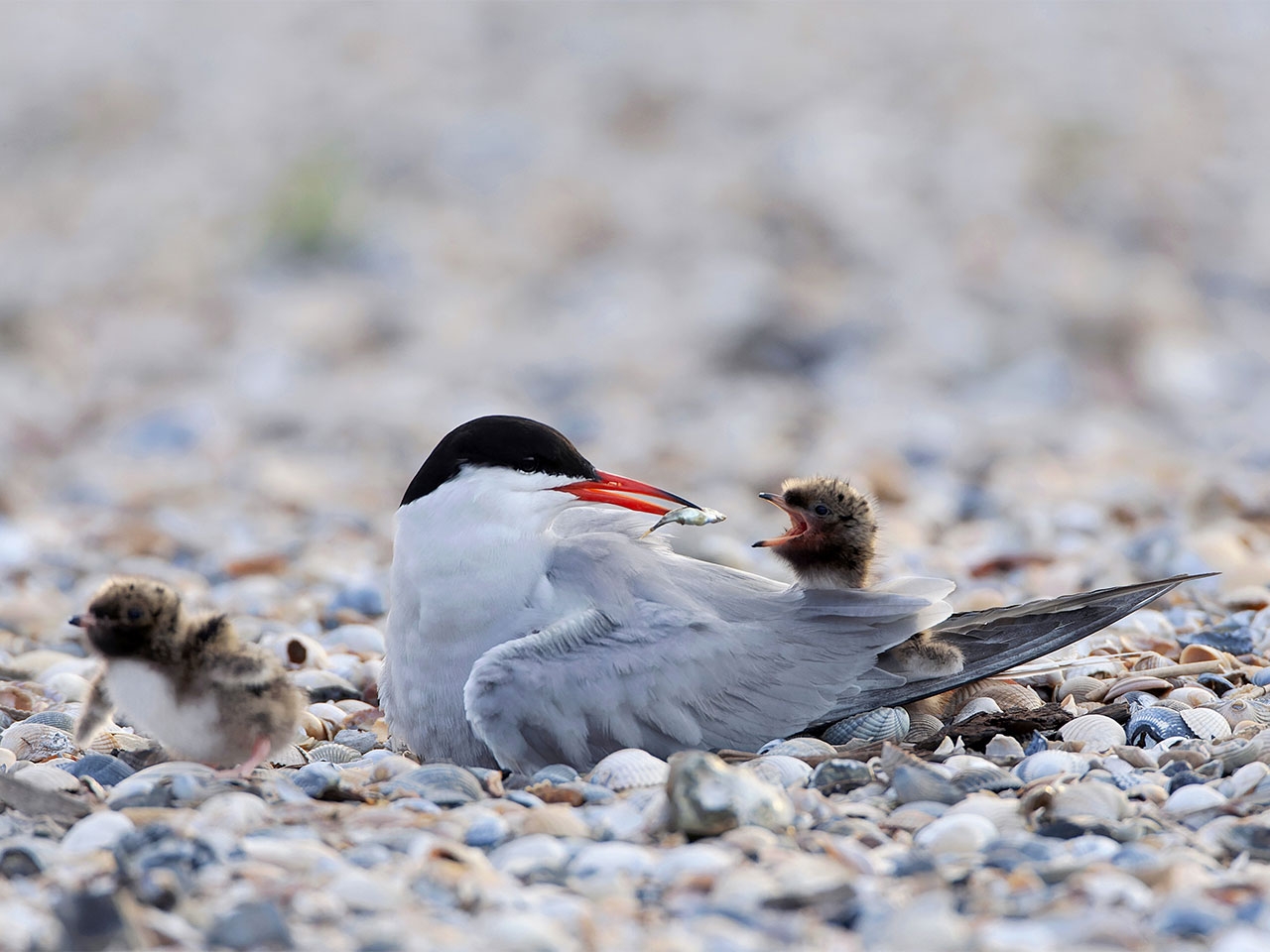
This graceful summer visitor can be found breeding around our coasts and inland at gravel pits, reservoirs and lakes where it nests in noisy colonies.
Key information
UK conservation status: (Birds of Conservation Concern) Amber
Protected by the Wildlife and Countryside Act 1981
Length: 31-35 cm
Wingspan: 77-98 cm
Weight: 90-150 g
Average lifespan: 12 years
UK breeding population: 12,000 pairs
What do common terns look like?
The common tern is characterised by its silvery grey upper body, white under belly, black cap and red bill as well as its long, forked tail from where it gets the nickname ‘sea swallow”. It has different identifying features depending on age, sex and season.
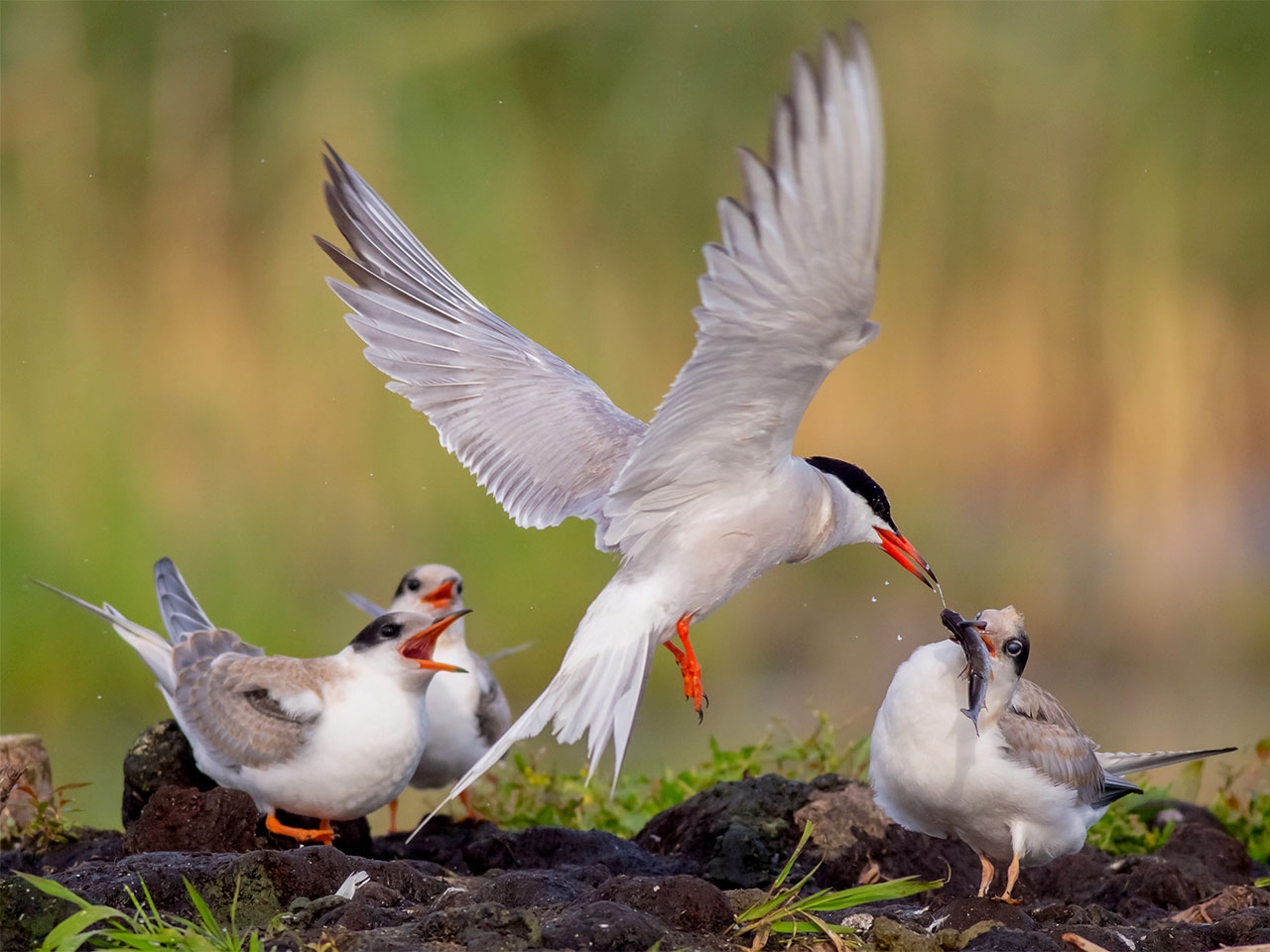
Not to be confused with...
The common tern can be separated (with practice) from arctic terns by its longer bill which has a black tip, a darker ‘wedge’ of outer wing feathers in flight and longer legs visible when perched.

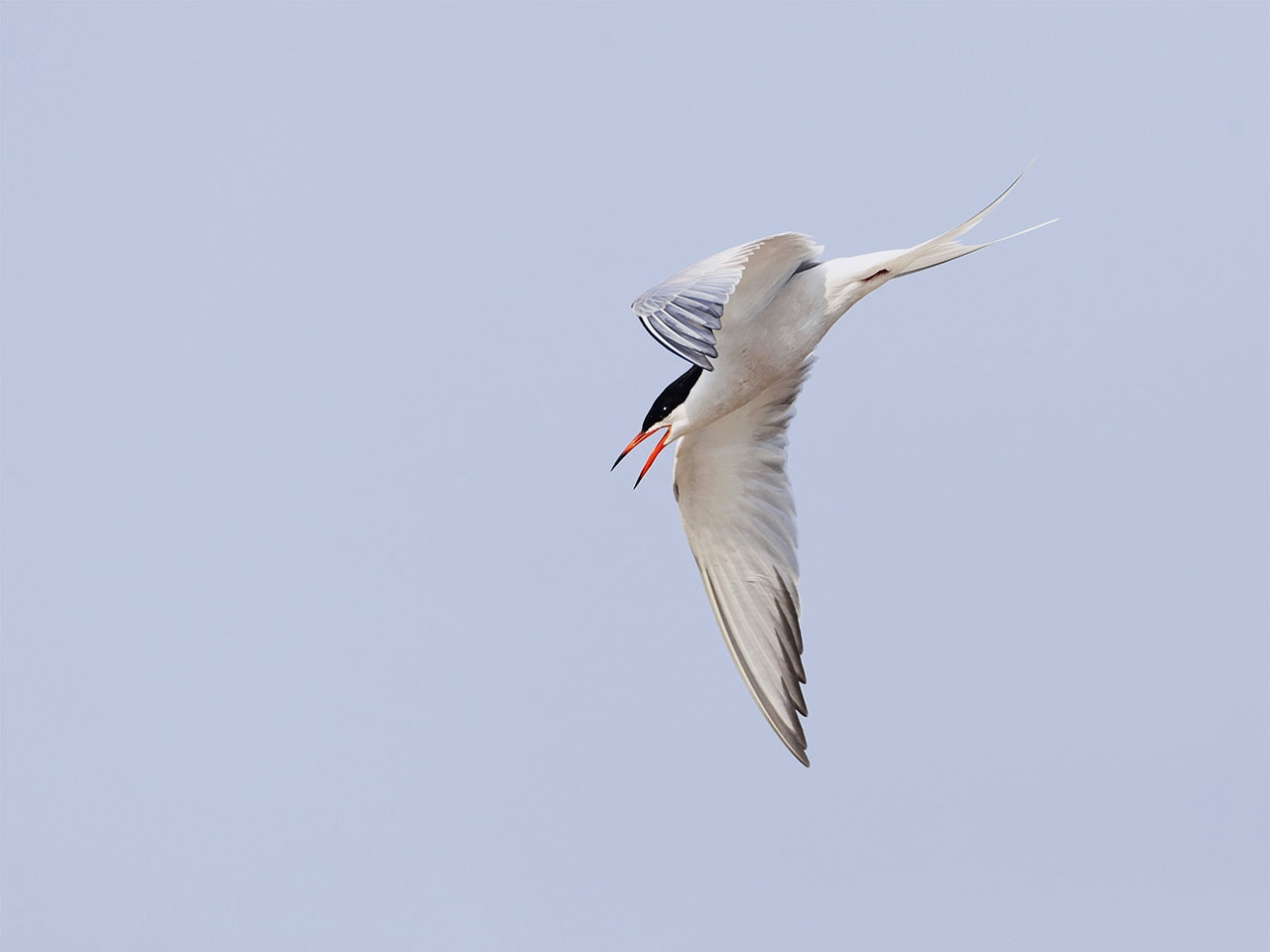
Where do common terns live?
The common tern can be seen feeding along rivers and over freshwater. In the breeding season it nests in noisy colonies. You can find them along coasts with shingle beaches and rocky islands, on rivers with shingle bars and at inland gravel pits and reservoirs. During autumn it can be seen offshore.
What do common terns eat?
The common tern mainly eats small fish from either the sea or freshwater lakes and large rivers. It feeds by hovering over the water before plunge-diving to catch its prey. It will also eat aquatic insects and crustaceans.
Common terns at WWT
How is WWT helping common terns?
We provide suitable nesting islands for these charismatic seabirds at all of our sites, consisting of bare, shingle islands in shallower lakes and floating rafts on deeper water. The sites are attractive to breeding gulls too however, so the race is often on for which gets there first! We help offset this by putting some floating islands out only when we see terns displaying. Annually we monitor the number of pairs, nests, clutches and fledged young ‘ternagers’.
Where and when can you see common terns?
The species breeds at most WWT reserves, with WWT Washington having particularly good numbers on Wader Lake.
Common terns arrive on our shores in April and leave in August and September. The best time to see them is throughout the summer particularly when they’re feeding their young, as they’ll fly some distance for food, returning to the nest site with a fish. They also use fish to display to their partners which can be very entertaining to watch.
Threats to common terns
The common tern is threatened by habitat loss on its breeding grounds, disturbance at nesting colonies by off-road vehicles, recreation, motorboats and dogs, as well as hunting in other countries within its range.
How can you help common terns?
WWT is the charity for wetlands and wildlife. We’re on a mission to restore wetlands because they are a wondrous solution to the problems our world faces. Together we will unlock their power and help nature burst back to life.
In the UK we have ten wetland sites that we manage for the benefit of the wildlife they support.
Become a member
Get free access all year to explore these extraordinary places while knowing that your membership is also helping us save wetlands and their wildlife in the UK and abroad. Plus, you’ll receive exciting updates on our wildlife news, find out about events on your doorstep and be the first to hear about our volunteering opportunities.
Join us